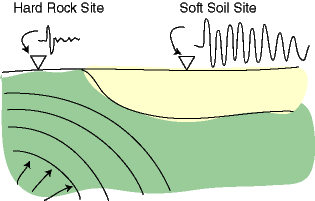| punkrockmichelle |
| geoIQ |
| Museumca.org |
| mceK12 |
The golden gate hills offer up exposed bedrock, or a covering layer of less consolidated rock or soil, and often a mix of the two. The variable substrates can be subject to different types of landslides, which can be triggered by earthquakes, or by high levels of rainfall.
 |
| SLU |
The extreme variations in damage and death tolls we see with earthquakes, often house by house, have to do with proximity to epicenters and variable substrates but also building codes, materials and practices. For example, Port au Prince Haiti was close to the 7.0 epicenter, with largely unreinforced masonry construction and an enormous death toll, while the recent 8.8 Chilean earthquake killed less than 1,000 people, due to the distance of the epicenter from major population centers, and to building codes.
| America's North Shore Journal |
Earthquake insurance is expensive and limited here in our earthquake prone locale. We'll take a closer look at our local earthquake related real estate issues in Shake-y Shake-y Part 2...
 |
| USGS |
in the meantime, you can check out this cool link to earthquakes round the world.
(Thanks to Judith Sheridan and Zoe Cooper-Caroselli for your insights)
No comments:
Post a Comment